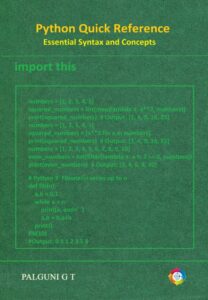The evolution of computing has always been driven by the pursuit of higher speed, greater efficiency, and the ability to solve increasingly complex problems. From early mechanical calculators to modern supercomputers, each generation of technology has pushed the boundaries of what machines can achieve. However, as classical computers approach their physical and logical limitations, scientists and engineers have begun to explore new paradigms of computation that move beyond traditional binary logic. One of the most promising frontiers in this journey is Quantum Computing.
Quantum computing combines the principles of computer science, mathematics, and quantum physics to create a new form of information processing. Unlike classical computers, which use bits that represent either a 0 or a 1, quantum computers use quantum bits (qubits) that can represent both 0 and 1 simultaneously through a property known as superposition. This property, along with entanglement and quantum interference, enables quantum computers to perform many calculations at once, potentially solving certain problems far faster than any classical computer could. This unique ability allows quantum systems to process a vast number of possibilities in parallel, making them potentially much more powerful for certain types of problems.
The concept of quantum computation emerged from the theoretical work of physicists such as Richard Feynman and David Deutsch in the 1980s, who proposed that a computer based on quantum mechanical principles could simulate natural processes more efficiently than any classical computer. Over the past few decades, advances in quantum theory, materials science, and nanotechnology have turned this once abstract idea into a rapidly developing field of practical research and innovation.
Quantum computing promises to revolutionize multiple domains — from cryptography and cybersecurity to drug discovery, financial modeling, artificial intelligence, and optimization problems that classical machines cannot handle efficiently. Companies like IBM, Google, Intel, and D-Wave, along with major research institutions worldwide, are actively developing quantum processors and algorithms to harness this emerging technology.
While the field is still in its early stages — often referred to as the Noisy Intermediate-Scale Quantum (NISQ) era — the progress achieved so far indicates that practical and scalable quantum computing is no longer a distant dream but an approaching reality. As we enter this new computational era, understanding the fundamentals of quantum computing becomes essential for students, researchers, and professionals alike.
Quantum computing represents not just an improvement in computational power, but a complete shift in how we think about information, logic, and problem-solving. By exploring the strange yet powerful world of quantum mechanics, we open the door to a new generation of technologies that may redefine science and society in the decades to come.
Evolution of Quantum Computers
The idea of quantum computing did not appear overnight — it evolved gradually through decades of scientific thought and experimentation. The evolution of quantum computers can be understood through several key milestones:
- Early Theoretical Foundations (1980s):
The concept of quantum computation was first proposed by Richard Feynman (1981) and David Deutsch (1985). Feynman suggested that classical computers struggle to simulate quantum systems efficiently, while a quantum computer could naturally model such behavior. Deutsch later formulated the idea of a universal quantum computer, laying the mathematical foundation for the field. - Algorithmic Breakthroughs (1990s):
The 1990s saw major theoretical advances that demonstrated the true potential of quantum computing.- Peter Shor (1994) developed Shor’s algorithm, which could factor large numbers exponentially faster than classical algorithms — posing a threat to modern encryption systems.
- Lov Grover (1996) introduced Grover’s algorithm, enabling faster database searching.
These discoveries showed that quantum computers could outperform classical systems for specific problem types.
- Experimental Progress (2000s):
Researchers began building small-scale quantum processors using technologies such as ion traps, superconducting circuits, and quantum dots. During this period, institutions like IBM, MIT, and NIST demonstrated the manipulation and measurement of a few qubits, marking the start of physical quantum computing. - Emergence of the NISQ Era (2010s–Present):
The 2010s marked the rise of practical, though still limited, quantum processors. Companies like IBM, Google, Intel, and D-Wave developed prototypes with tens to hundreds of qubits. In 2019, Google announced that its quantum processor “Sycamore” achieved quantum supremacy, performing a computation faster than the most powerful classical supercomputer could. - Current Developments and Future Outlook (2020s Onwards):
Today, quantum computing has entered the Noisy Intermediate-Scale Quantum (NISQ) stage — systems with limited qubits and some degree of error. Research now focuses on error correction, quantum algorithms, scalability, and hybrid quantum-classical computing. The long-term vision is to achieve fault-tolerant quantum computers capable of solving real-world problems in cryptography, drug design, materials science, and artificial intelligence.
Significance of Quantum Computing
Quantum computing represents not merely an enhancement of computational power but a complete transformation of the way information is processed. It opens new possibilities for:
- Breaking classical encryption and introducing quantum-safe cryptography,
- Accelerating scientific simulations at atomic and molecular levels,
- Optimizing complex systems in finance, logistics, and engineering,
- Enhancing artificial intelligence through quantum learning models.
These applications make quantum computing one of the most disruptive technologies of the 21st century — one that could reshape industries, scientific research, and global security.
Conclusion
The evolution of quantum computing marks a historic shift from deterministic, binary-based computation to a probabilistic and parallel model inspired by nature itself. Though still in its early stages, continuous progress in theory, algorithms, and hardware has made quantum computing a practical reality rather than a distant dream. Understanding its foundations and evolution helps us appreciate both the complexity of the challenges ahead and the immense potential it holds for the future of technology and human advancement.


